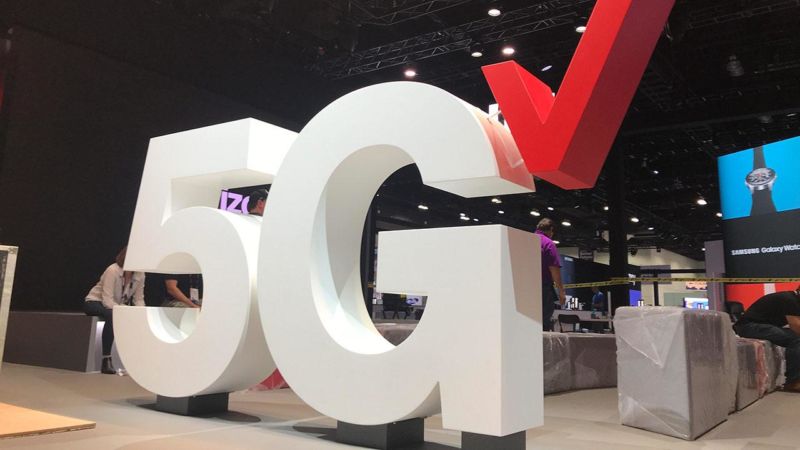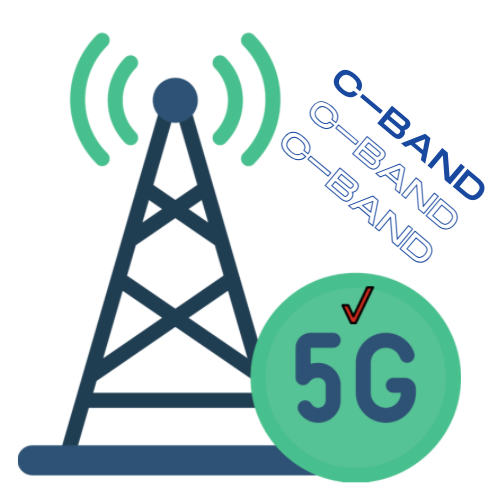
Up until more recently, every sports fan would likely agree that the best way to watch live sports is in a loud stadium packed with other like minded fans. Due to the changes we’ve all had to face with the pandemic, it’s now more difficult to feel comfortable around thousands of strangers.
At-home tech is growing and making it more possible for fans to enjoy the same benefits from the safety of their couch. Fans aren’t only interested in watching the live games, but they are now looking more at real-time tracking of scores and stats. They may even be streaming multiple games at the same time. And what would make the experience even better? To be totally immersed within the game using augmented reality. This truly 21st century tech can now be made possible thanks to Verizon’s 5G Ultra Wideband service.
5G Ultra Wideband is available in select areas right now, but Verizon is slowly rolling out more coverage. As Verizon continues to expand this service coverage and as 5G adoption increases, users will be able to experience a secure, reliable connection that offers great speeds, massive capacity and low latency.
With the Big Game ready to go this weekend, and more fans feeling comfortable about getting together, 5G Ultra Wideband enables endless possibilities for a second-screen experience while attending live games. Moving forward, this could shape stadium operations in a way that makes navigating a crowded stadium more seamless.
5G Ultra Wideband in crowded stadiums
Assuming you’ve ever found yourself at a crowded event, you may have experienced times where your smartphone essentially stops providing a cellular signal, or you simply have no speed to do anything. You may be able to place a phone call, but forget about texts or social media posts, and especially don’t think about trying to stream any video.
“At stadiums where you’re packing 70,000 or 80,000 people into a confined area, connectivity has been a challenge for years,” says Eric Nagy, director of sports partnerships and innovation at Verizon. “So when you look at 5G and its characteristics, it really fits in nicely when it comes to stadiums. When you are connected to 5G Ultra Wideband in such a crowded, tight area, you can still get outstanding performance and do things that those around you can’t.”
According to Verizon’s announcement, “5G Ultra Wideband’s high performance should transform not only stadiums but the operations of retail stores, restaurants and even cities. For an enterprise, it could create a safer factory floor and many other benefits.”
There’s several applications for in-person fans that are already showing great promise. Fans will be able to easily track statistics and win probability, pull up in-game stats on the game they’re attending or even stream additional games on their mobile device. It also opens the door to entirely new and innovative ways of experiencing the game.
Enter Verizon’s 5G Multi-View experience – “a dynamic, personalized mobile streaming experience, available in select stadiums, that allows fans to view seven camera angles at once, choose replays from any angle and stay connected to family and friends with a selfie cam.” On some 5G-enabled phones, the experience adds AR-overlays of stats like top plays and win probability.
There’s also some exciting features from the folks at ShotTracker, a Verizon Ventures portfolio company. They have built hardware that uses sensors on the ball, in spots around the field, and even on the players. This allows them to track activity in real-time and send that data back where coaches and players can review them. With access to live analytics, it can help players learn from mistakes and the coach at making quicker decisions on how to proceed.
“Most dynamic of all may be the impact on the fan experience,” says Davyeon Ross, co-founder and president at ShotTracker. “Not only does live data-sharing enable broadcasters to show fans value-add diagrams like shot maps or up-to-the-second stats, but the future could be headed for an experience that fans can more easily personalize, both at the game and at home.”
It’s easy to imagine the possibilities now with 5G. Having cameras on the players, ShotTracker’s technology, and a reliable 5G connection in place may one day allow us to view the game from that player’s perspective.
“Our data is connected to the video, so we could make it so that if you’re home, you could configure it and say, ‘hey, I want to choose what view I want to see. I want a ‘Zion Cam’ or maybe I want this pylon view that’s available,’” Ross says, referring to cameras attached to an individual player or pylons around a stadium. “Historically, broadcasters have controlled what we see as consumers. I think the evolution of 5G is not only in-stadium, but outside of stadiums. It’s going to empower and amplify those solutions to allow a certain level of personalization that will come in the future.”
Evolving the fan experience
In the near future, 5G has the potential of completely revolutionizing the way fans experience “live” sports. As we’ve already seen with T-Mobile at SoFi Stadium in Los Angeles, one area that can greatly benefit are stadiums and their day to day operations. Imagine having the option to enter the game with ticketless, hands-free entry or quickly grab snacks, beverages or merchandise by paying with touchless sales options rather than using a card or smart device. In an effort to start that process, Verizon opened a 5G-powered store offering “grab and go” checkout at Hard Rock Stadium in Miami on December 19th.
“I visited our ‘frictionless’ store in Miami,” says Nagy, “and I walked in and walked out within 30 seconds buying the merchandise that I needed.”
With regards to augmented reality, some ideas have been to show fans wait times – on bathroom lines, concession stands, or at the exit gates. Other innovations have yet to be envisioned. And even with the progress, Nagy says Verizon will continue to take in fan input and shape the stadium experience moving forward. His team is studying, for instance, how fans interact with the Multi-View experience.
“Is this something that you use when you’re going out for a break to grab a beverage and want to stay up to date with the game? Or is it something you’re going to use in your seat when you’re sitting 20 rows back from the field?” Nagy asks. “We’re exploring that right now, and we take a lot of feedback from fans.”
How Teams Can Improve with 5G Tech
Aside from the fan experience, 5G is making a profound impact on the sporting world. This was most recently displayed during the Phoenix Suns’ last season. The team and their coaching staff utilized Verizon 5G and advanced analytic tools, which helped the Suns reveal otherwise hidden insights. In use were 150 HD cameras, sensors, nodes and 3D force plates, all of which was to capture computer-aided motion analysis, player and ball tracking, and shot tracking. It then leveraged 5G Ultra Wideband connectivity to tie it all together into a single integrated system.
It’s not just basketball either. Teams across almost every sport have started to integrate some type of 5G technology. Nagy says a recent use case with the NHL allowed for testers to point their 5G device, using an AR app running on Verizon’s 5G Edge with AWS wavelength, at any player on the ice and see real-time stats overlaid in AR, such as player speed, time on ice and historical stats.
“There could be a world where you have models written so you can detect certain defenses, and then you could get suggestions on what you do to counteract that,” Nagy says. “Could that be the future? I don’t know. I think the key is that the technology and 5G will help enable that.




